Following his Fourth World saga at DC, Jack Kirby returned to Marvel to create The Eternals, a similarly grandiose cosmic odyssey. During his 19-issue (plus an annual) run, the King introduced characters and concepts that continue to define every iteration of the series and even the Marvel Universe as a whole.
But a number of creators have touched the Eternals since Kirby, adding their own additions and spins to the mythos. With a major Marvel Studios film inspired by the series looming, The Beat thought now would be a good time to go through some of the most significant Eternals storylines throughout the decades
I happily admit this is a work-in-progress. The history of the Eternals (and the Celestials, et al) is complicated. Please let me know in the comments if I’m mistaken somewhere, and I’ll look into the issue and try to correct it.
Featured image art by Eric Nguyen
The history of the Eternals
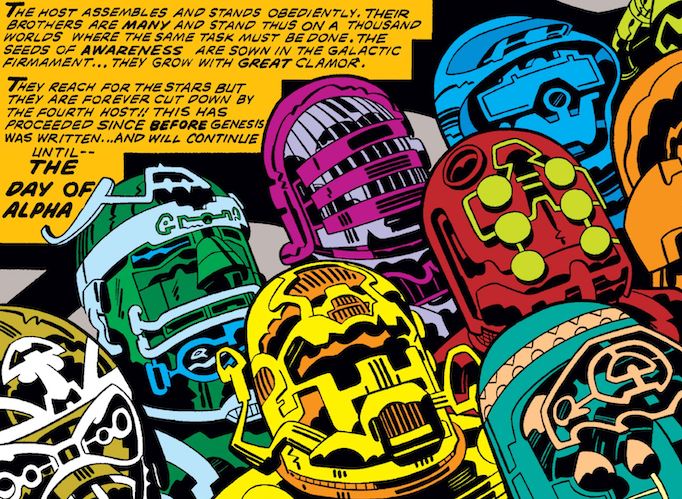
With a history spanning back to the birth of humanity, the Eternals and its associated characters existed many millennia before the start of Jack Kirby’s run. Believe it or not, this is as succinct a summary as I can come up with of what came before:
The godlike Celestials visited Earth to experiment on humanoids so that they evolved into three species: humans, Deviants, and Eternals. The Eternals are by all measurements the most successful genetic outcome. Also referred to as Homo Immortalis, members of the species don’t die natural deaths and have unique cosmic abilities. Their only downside is =they rarely reproduce, so their numbers don’t grow.
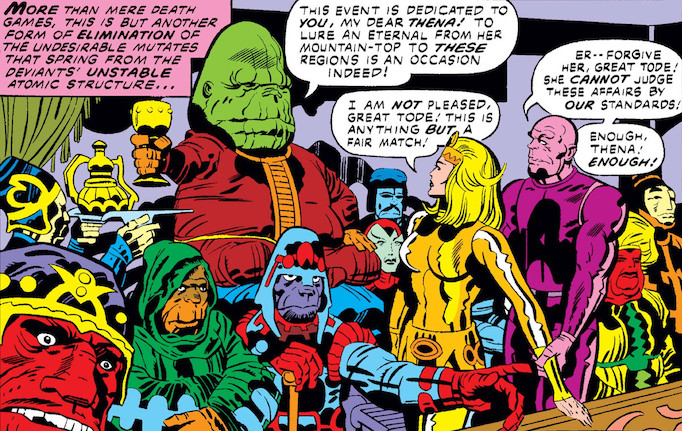
The Deviants, meanwhile, are the genetic failures from the Celestials’ experiments. Their kind is genetically unstable and often looks monstrous in appearance. But they breed plentifully, so their endless battle with the Eternals is a numbers game. The two races waged war for millennia, but their battles were largely shielded from human eyes.

The Eternals occasionally interacted with mankind, inspiring some of the world’s ancient myths. Sound out their names and what gods they inspired needs no explanation. The most momentous events in the existence of the species are the repeated returns of the Celestials. Their initial visit is referred to as The First Host. Every following Host goes to Earth to judge its inhabitants and decide if they deserve to live on the planet the Celestials seeded.
The Second Host arrived approximately 21,000 years ahead of Jack Kirby’s run to discover that the Deviants created an empire that spanned a continent named Lemuria. Deviants were preparing to go to war with its neighboring continent Atlantis, so the Celestials sunk Lemuria. Atlantis was an unexpected casualty of the same fate. The Celestials left with millions dead and the planet completely reshaped.
The Third Host traveled to Earth 1000 years ago. They traveled the world to experiment on the species it created. Concerned, Odin of Asgard brought together fellow Sky-Gods to meet with the Celestials. Upon learning how easily the space gods can destroy humanity and the gods it worships, the Sky-Gods agreed not to interfere with the Celestials for at least a thousand years. Rather convenient for current Marvel storylines!
Jack Kirby’s Eternals
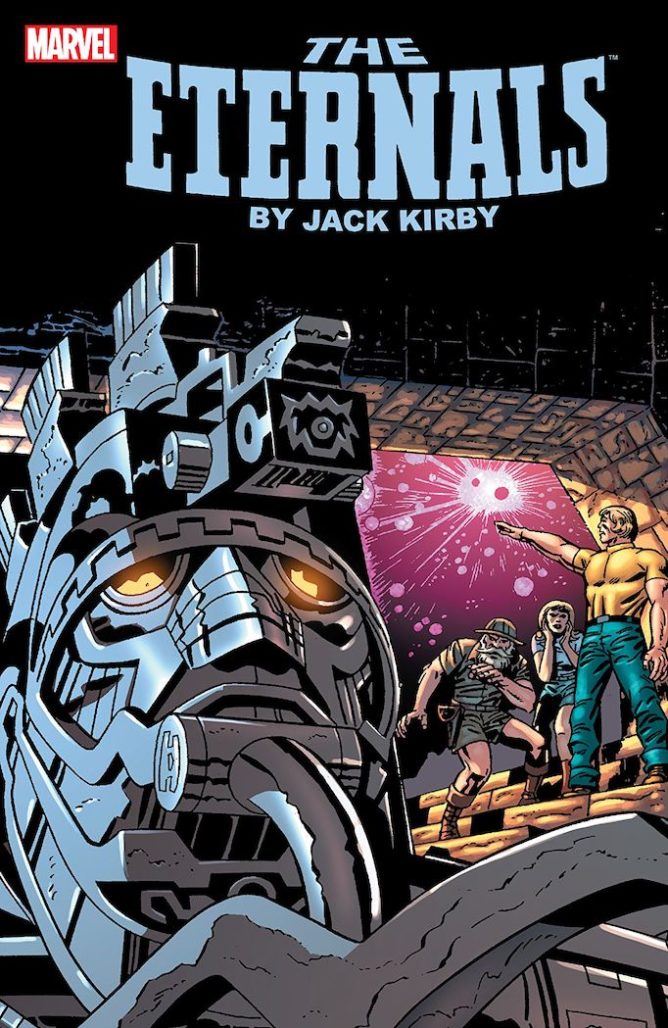
At the start of the series, the Eternal Ikarus mistakenly triggers the Fourth Host (a clear reference to Jack Kirby’s Fourth World.) To prepare for the impending arrival of the Celestials, Ikarus unites the Eternals while fending off an attack by the Deviants. Kirby unspools the untold history of humanity while also telling the story Ikarus recruits larger-than-life characters such as Sersi, Makarri, and Thena to prepare for the Celestials’ return. The Deviants launch an energy bomb at the Fourth Host’s mothership, which would fail to hurt the Celestials and only ensure Earth’s doom. The Eternals manage to destroy the bomb before it can detonate, saving humanity from the Celestials’ final judgment.
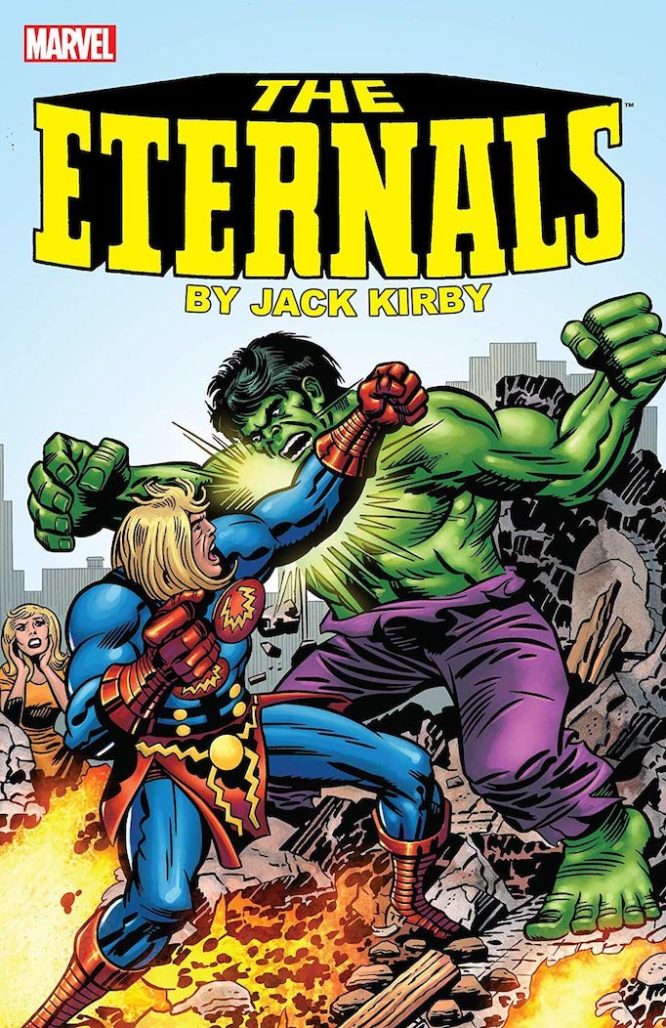
Many comic book readers would be surprised to learn that the concepts Jack Kirby introduced in The Eternals were never meant to apply to the Marvel Universe. In fact, the King very much opposed the idea, at least as long as he wrote and drew the series. Even when editorially mandated to add Marvel characters during the second half of his run, Kirby snuck his away around the orders he was given. The funniest example is when Eternals fight the Hulk over multiple issues, only for them to discover it’s actually an android built in the Jade Giant’s likeness.
After the King
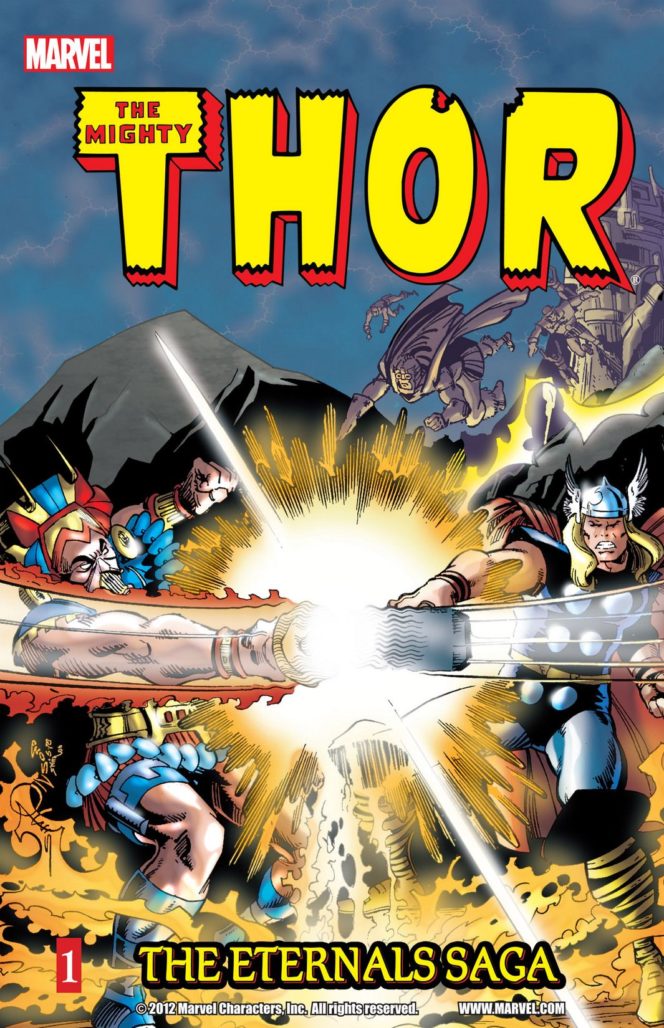
Though Kirby never intended for the Eternals to interact with the Marvel Universe, his new series had a lot of fans in Marvel’s bullpen. Creators wanted to incorporate The Eternals into the books they were writing and drawing. With Kirby’s contribution to The Eternals complete, no one stood in their way.
The race’s most memorable appearance that didn’t take place in a comic called The Eternals is probably the Eternals Saga storyline in Thor. It was written by Roy Thomas and the first issue was illustrated by Walt Simonson several years before his own legendary run on the title. In classic Marvel tradition, Thor meets the Eternals and begins fighting them before learning they’re on the same side. They then work together to prevent Odin from attacking the Celestials and waging war Earth can’t win. The Thor storyline firmly planted the Eternals in the Marvel Universe. Even though they were only used sparingly going forward, the characters at least had a foothold in Marvel’s continuity.
Contributions to the Marvel Mythos
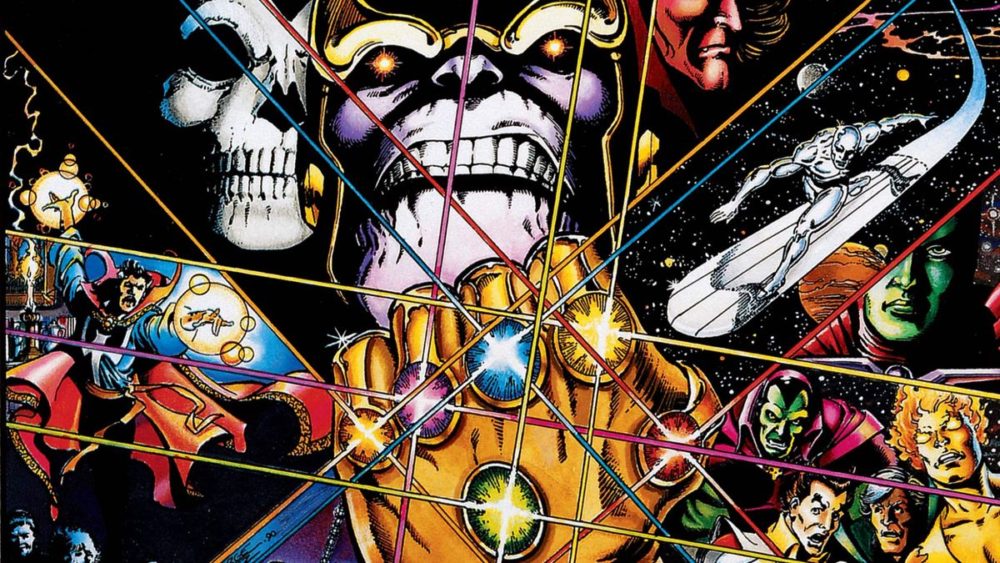
Multiple Eternals were members of the Avengers roster over the years. During Roger Stern’s run, Sersi interacts with Earth’s Mightiest Heroes, during which time she met Starfox, a fellow Eternal.
The Eternals’ most significant contribution to Marvel continuity was actually a retcon which made Thanos an Eternal-Deviant hybrid. The Mad Titan had already been established as a citizen of, naturally, Titan. But the planet was revealed to in fact be the home of a second colony of Eternals. Thanos’ race will certainly be addressed in the upcoming Eternals film. Similarly, Thanos’ connection to the Kirby creations instantly made them a more important piece of Marvel history.
A brief revival courtesy of Neil Gaiman
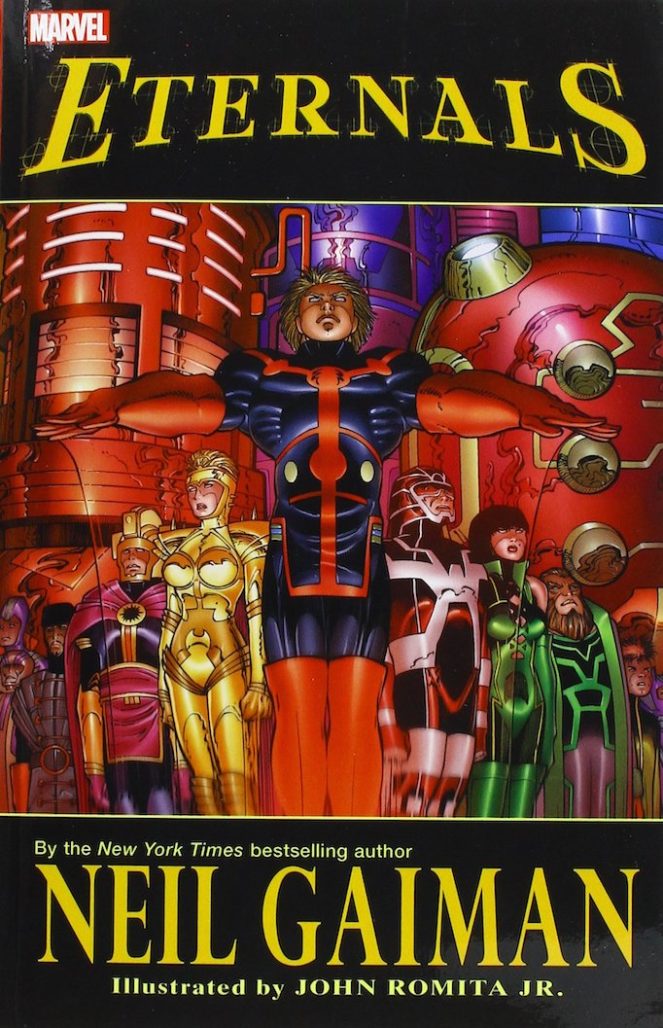
By the 2000s, the Eternals were largely absent from Marvel Comics. However, they became the object of renewed attention when Neil Gaiman chose to write a comic featuring them for his second of three planned Marvel projects (still waiting for that third one, Neil!)
In 2006, Marvel published an Eternals miniseries written by Neil Gaiman and illustrated by John Romita, Jr. Gaiman said he was less interested in writing Fantastic Four or the Avengers, comics that Jack Kirby got right from the beginning. Gaiman wanted to write a series that Jack Kirby didn’t hit out of the park.
Unfortunately, Neil’s own contributions to the Eternals mythos were pretty lackluster. In an attempt to do something new with the franchise, Gaiman’s series forgoes the Celestials as the primary threat. The story sees the Eternals awakened one by one to investigate how they lost their memories and were forgotten. Ikarus, Sersi, Makkari, and the rest learned it was Sprite’s doing. Cursed to be an11-year-old forever, the young Eternal decided to activate the Uni-Mind, which combines the might of all the Eternals. Powered by a Dreaming Celestial, it turns all the Eternals human so he can finally grow up. Ending the story with Sprite’s death, Gaiman leaves the future of The Eternals to its next writers.
A short-lived ongoing
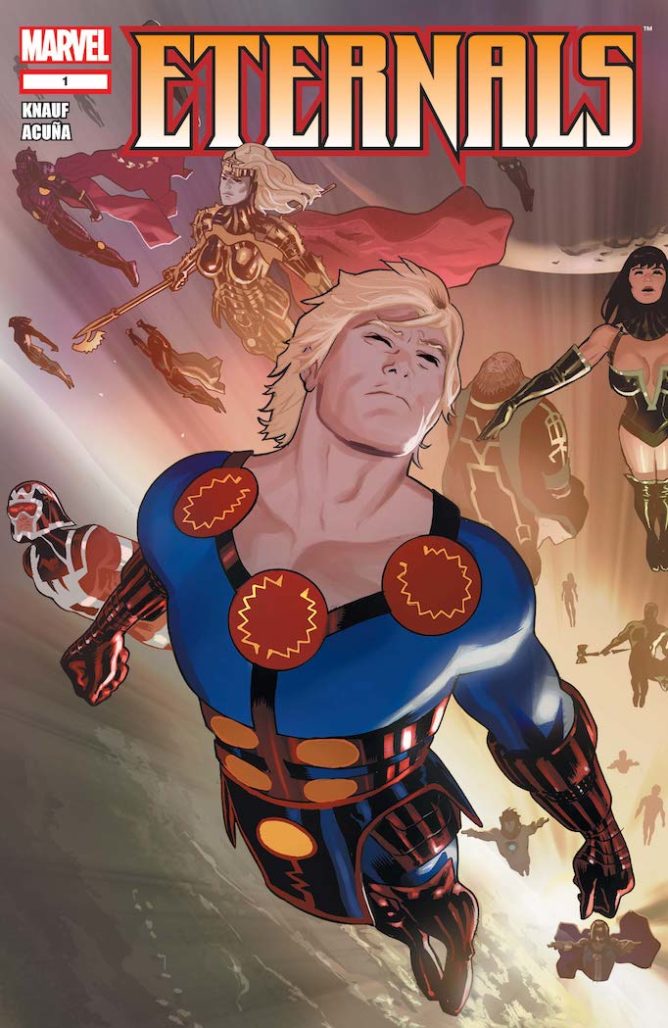
A new series followed Gaiman’s story, written by Daniel and Charles Knauf, creators of the HBO series Carnivale who were writing Iron Man at the time. Though the book only lasted nine issues, it might be the best modern interpretation of The Eternals to date. The 2008 series was written by Daniel and Charles Knauf, creators of the HBO series Carnivale and writers of Iron Man at the time. They managed to streamline Kirby’s fantastical concepts into something consumable for today’s audiences, and Daniel Acuna’s art style fits the larger-than-life tone masterfully. Plus, they maintain some of the Kirby wackiness with the issues’ closing captions.
The first arc centered on a war brewing between the Deviants and Celestials as Druig and Ikaris rush to recruit soldiers to their sides. At the same time, Makkari attempts to communicate with the Dreaming Celestial. Drug brainwashes Gilgamesh, the Forgotten One to destroy the Activation Chamber that brings the Eternals back to life. On his way to doing so, Gilgamesh brutally murders Makkari. His death activates the Dreaming Celestial’s Song of the Sleeper, which places the entire mortal world into an endless slumber. To stop the song, Sersi sacrifices herself and wakes up in a cosmic limbo, served by a bartender who bears a striking resemblance to Jack Kirby, named the One Above All.
Following Sersi’s death, the Dreaming Celestial begins to act strangely, showing anger and engaging in discussion with The Watcher. It grows feelings, becomes sentient, and ultimately defies its orders. After dying in a battle against the Horde it enters cosmic limbo and transforms. The Dreaming Celestial meets the One-Above-All, who finally has a companion. That’s where the story ends, satisfying on its own but leaving many strings that no future Marvel comics pick up on.
While the creative team managed to tell a complete, engaging story over the course of its nine issues, it would have been great for readers (and the writers of the Eternals film!) to get more. If the series continued, the Eternals could have become more firmly established in the Marvel Universe instead of quickly forgotten again. Unfortunately, the property wasn’t important enough to 2008 Marvel fans to sustain an ongoing series, even following the Gaiman boost.
Since the end of the Knauf’s’ run, the characters weren’t forgotten by humanity, just the writers of Marvel Comics. The characters went largely unused… until last year.
The latest events of the Eternals
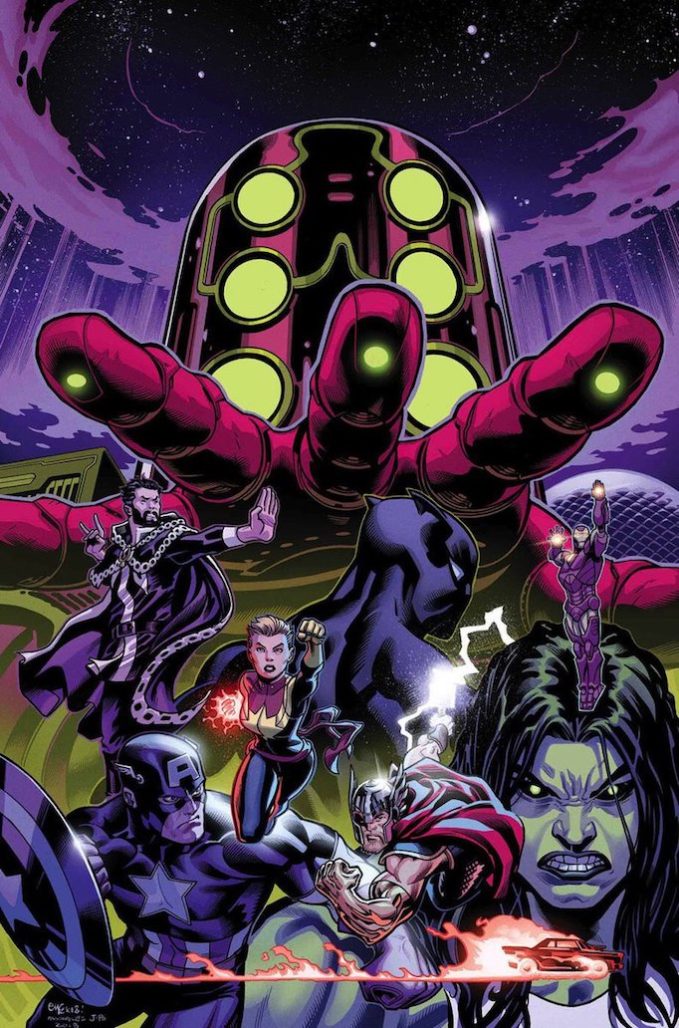
They all died. No, seriously. Jason Aaron’s run on Avengers begins with dead Celestials falling from the skies. They were killed by the Final Host, a group of Dark Celestials. The Dark Celestials were overcome by the Horde, a swarm of cosmic locusts that devour entire solar systems.
The Avengers learned that Loki has sided with the Final Host and intends to join them in wreaking havoc. Loki informs Captain America that a sick Alpha Celestial fell to earth four billion years ago. Its infection spread across the planet, which is why Earth is so filled with superhumans. With that reveal, Aaron introduced a brilliant answer to that question which further ingratiates the Kirby concepts into the framework of Marvel Comics. Suddenly the origin of everyone’s favorite superheroes and villains is tied to a morbid and poignant event early in Earth’s history.
In need of help against the Final Host, Iron Man and Doctor Strange travel to Olympia, the home of the Eternals. They arrive to find every Eternal dead but one. A dying Ikaris tells Tony Stark that he now believes the Eternals were never humanity’s protectors, but to cultivate them for the Celestials every time they return. The humans are nothing but pathogen for the Celestials. Ikarus says that only the Unimind can stop the Final Host, then dies in Tony’s arms.
Loki informs Captain America that a damaged Celestial came to Earth a million years ago. It needed help but was instead destroyed by the world’s earliest superhumans. The ancient version of the Avengers buried the Celestial, which itself became infected by the Horde brought to Earth by the Alpha Celestial.
When the Celestial went missing a million years ago, its supposed lover came to investigate. He found its fellow Celestial dead and teeming with cosmic bugs. The Horde didn’t kill the new arrival but instead transformed it into a Dark Celestial that would do the Horde’s bidding.
The disappearance of two Celestials is what really triggered the arrival of the First Horde. Loki gleefully tells Cap that the stories of the Celestial coming to seed life and tamper with human evolution were nothing but a lie. They only visited to inspect the infected Celestials. Soon all Celestials would succumb to the same illness and be turned into Dark Celestials. The only ones left standing were Loki’s Final Host.
The heroes tap into the cosmic power of the Celestials to turn themselves into literal giant-size Avengers. They manage to take down the Dark Celestials and turn one of their carcasses into its new headquarters. That ends Jason Aaron’s first arc, and clearly more with Kirby’s concepts is on the horizon.
So, yes, the Eternals and the Celestials as we know them were unceremoniously killed, in a somewhat convoluted way that continues the tradition of complicated Eternals storylines. But I suspect Jason Aaron (and possibly Al Ewing) have some very big plans for the Eternals. Come back soon for a piece about everything Aaron, Ewing, and other Marvel writers have put into play to set up the potential revival of The Eternals. Until then, don’t mess with any space gods!


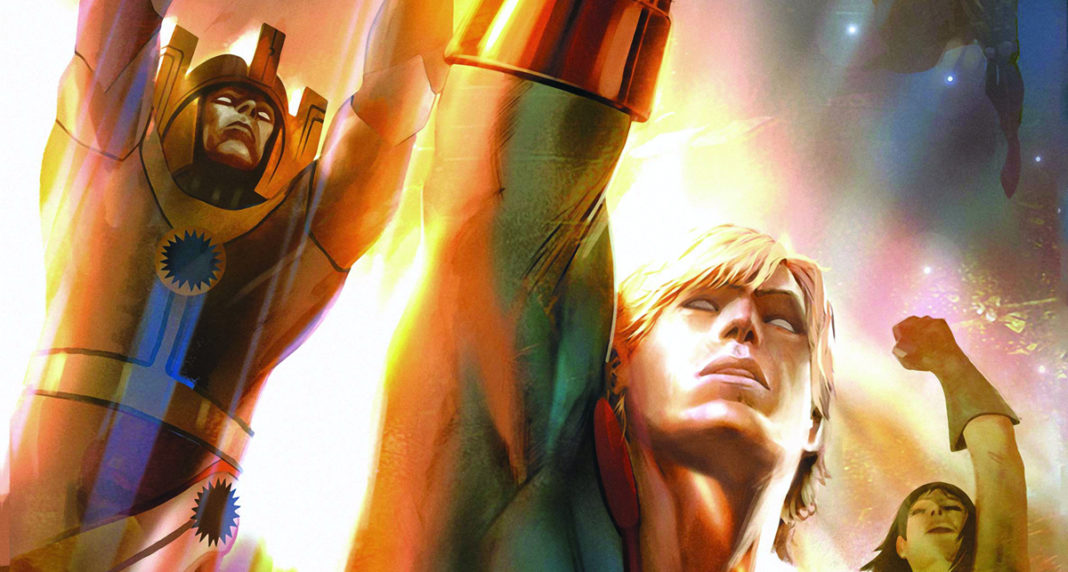
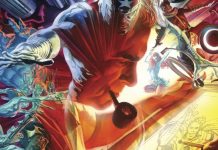
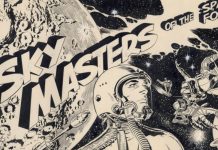
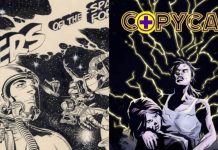
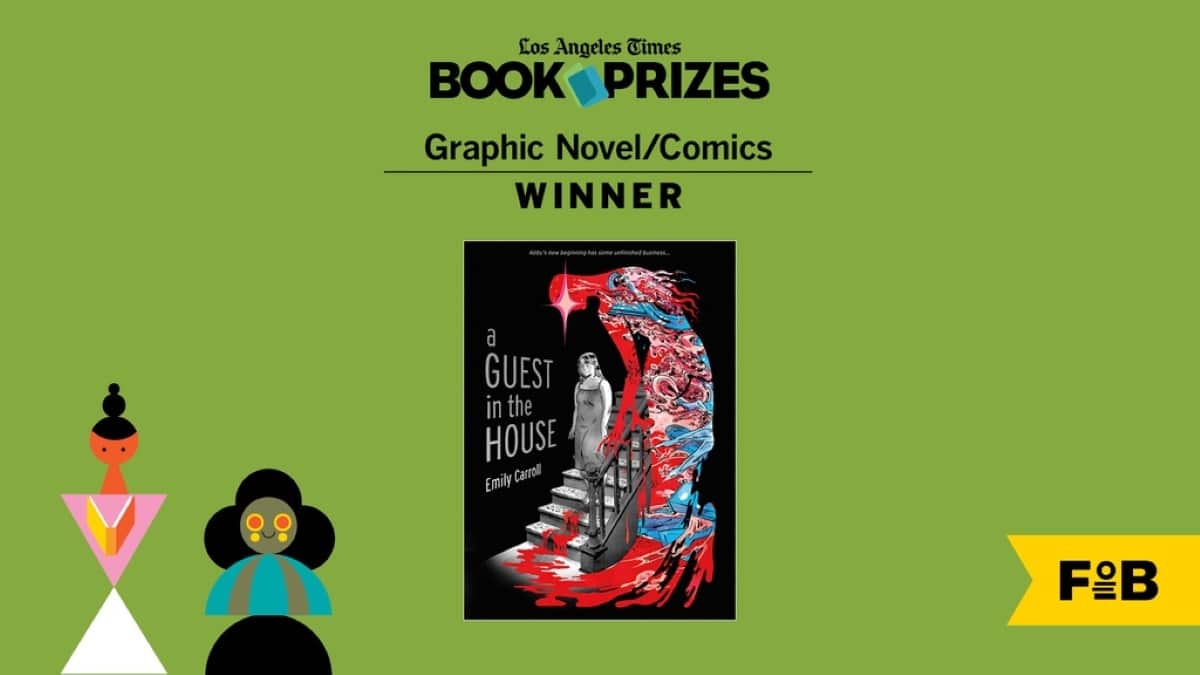

The coloring on those Kirby reprints is abysmal.
Comments are closed.